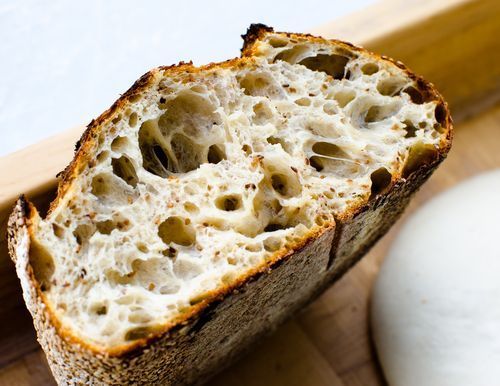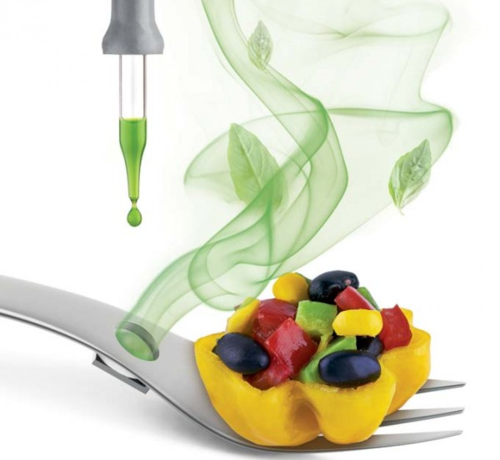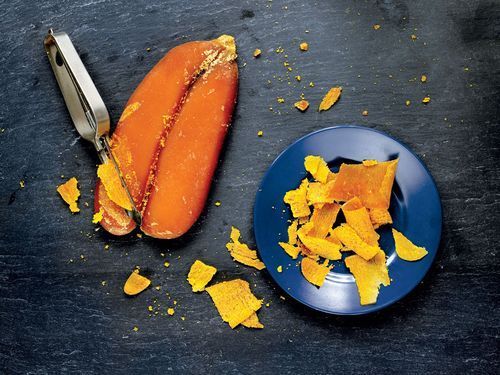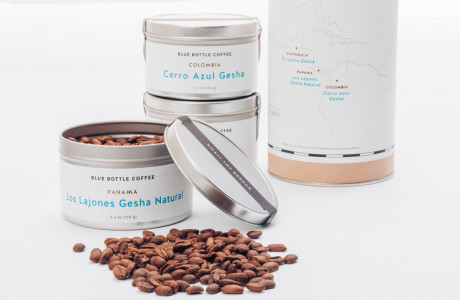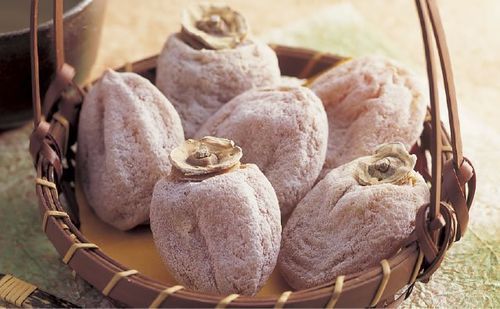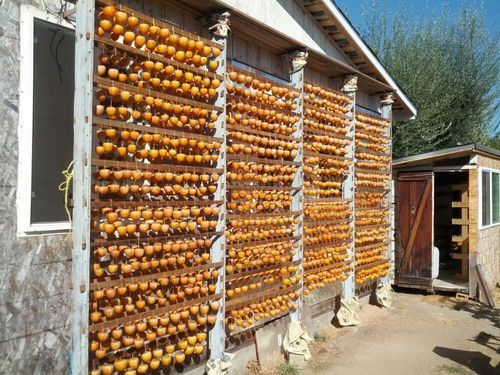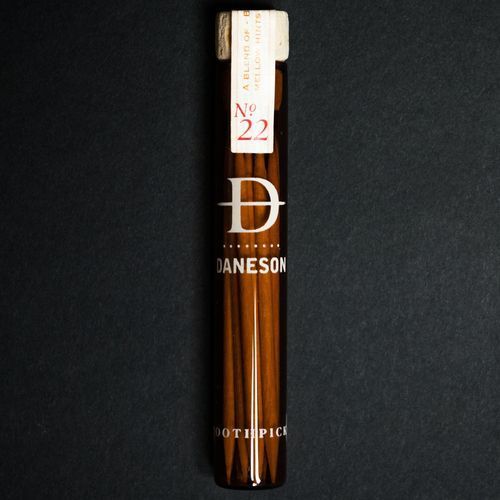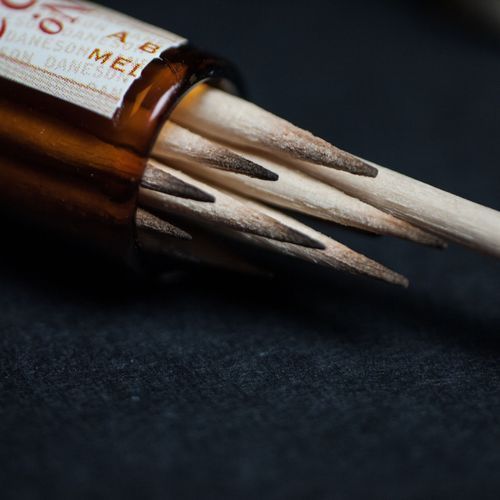Ruth Reichl's Blog, page 17
December 20, 2014
2014 Gift Guide, Day 27
Rolling in Dough
Baking your own bread is the most satisfying thing you can do in the kitchen. For lazy people (count me among them), Jim Leahy’s excellent no-knead recipe produces an astonishingly satisfying loaf.
But bread's my favorite food - the answer I always give when people ask what I'd eat if I could only eat one thing for the rest of my life. Then I think of something wild, crusty, deeply brown, with a moist crumb and formidable elasticity. Spread with cold sweet butter....
Bread like that demands commitment. It took Chad Robertson, co-owner of Tartine Bakery, over ten years to perfect his now legendary loaf (pictured here).
If you've got bread nerds on your list, people you really love, consider giving them a series of classes at the San Francisco Baking Institute. It’s a real commitment on your part ($1000.) And on theirs too; SFBI offers hands-on five-day intensives that make your average cooking class look like a speed-dating exercise. For beginners there's the Systematic Approach to Breads; for those who've mastered the basics there are advanced intensives on everything from German breads to viennoiserie.
If you're not ready to spend a grand on your friend, here's another suggestion for passionate bread bakers: Sam Fromartz's In Search of the Perfect Loaf is a wonderful read that's filled with information that even the most knowledgable baker will find fascinating.
December 19, 2014
2014 Gift Guide, Day 26
Home Grown
Here on the East Coast, January, February, and March are bleak. Snow melts into sludge. Sunlight's in short supply. Night comes too soon. You begin longing for fresh vegetables, waiting for the return of vibrant farmers' markets.
This gift really helps. I love looking at the vertical garden in my window. Tasting it is even better. You harvest your herbs or vegetables, and then replant with the new shipment that arrives each month in the mail.
The nuts and bolts: WindowFarms come in columns of three pots. A small pump automatically waters each plant, delivering nutrients straight to the roots. It's not cheap: in addition to the farm itself, you have to buy a monthly plan. But it's a great gift that will make your friends think of you every time they snip off a fresh herb or vegetable.
December 18, 2014
2014 Gift Guide, Day 25
Nice Ice
Speakeasy's are the coolest kids on the block. The bitters shelves in fancy grocery stores keep growing. And cocktail guides have become their own special category in your local bookstore. We're having a cocktail moment—and it's not likely to end very soon.
But if you care about cocktails, attention must be paid to the ice. The best bartenders even engineer their ice so that drinks dilute at the perfect pace. Besides, nice ice is... well beautiful.
There are many tools that would delight an aspiring mixologist, but highest on my list is this Neat Ice Kit. It comes with two molds to make two perfectly clear square cubes. (Impurities are pushed to the bottom, and you just cut off the clouds.) There’s a razor-sharp chisel to break giant cubes into a more standard size, and a canvas bag and muddler-mallet to crush your extremely clear ice.
Should you want the slightly less expensive single ice cube maker, you can get it here.
If you've got a cocktail nerd in your life, you could not do better. Order today, and you can still get it there in time for Christmas.
December 17, 2014
2014 Gift Guide, Day Twenty Four
Deep Dark Soft Seductive
You either love it or you don't. Those who hate licorice will tell you about their first communion with the stuff, which invariably includes five gallon glass jars, broken teeth and cobwebs.
But true licorice is something else. It's warm and spicy, with a flavor that fills your mouth and then your mind. Most Americans only know sweet licorice, and if you've never had the salty sort, you're in for a treat.
My favorite salt maker, Jacobsen’s from Tillamook, Oregon has tapped into the potential of American-made salty licorice. Jacobsen's teamed up with Portland-based super candymaker QUIN to make this eccentric little sweet. This is not classic licorice. A bit soft, it's the most macho caramel you've ever encountered. Every true licorice-lover I know becomes instantly addicted. Offer them a bag of this fantastic licorice and they will be eternally grateful.
It’s perfect stashed into a pocket for a late-afternoon treat. And even better in a stocking.
December 16, 2014
2014 Gift Guide, Day 23
Aroma Matters
Just how much of our sensory experience of food is informed by our taste buds, how much by our noses? I once did a radio show with Daniel Boulud, where we put clothespins on our noses, blindfolds on our eyes, and began eating jelly beans. It was truly stunning; we literally could not tell the difference between cherry and licorice. Everything they say about taste being primarily smell is true.
The Aromafork is much more appealing than clothespins and blindfolds. Drop a bead of lychee aroma into the tiny well at the base of this fork, stab a piece of roast pork, and voila!, you're eating pork while tasting fruit. It's a cool trick - the kind that emboldens you to take flavor risks in the kitchen.
Part elevated gag gift, part amateur science project, this is the perfect present for the curious cook. The 21 aromas that come with each Aromafork are natural, and the system seems designed to encourage delicious—if off-beat—flavor pairings.
Besides, it's so much fun.
December 15, 2014
2014 Gift Guide, Day 22
Poor Man's Caviar
Or maybe not so poor. Bottarga, the cured roe of grey mullet, isn't exactly cheap. On the other hand, you get the hit of caviar - that sexy saline flavor - without the expense. Because you just can't eat that much of it.
Bottarga is poised to be tomorrow's uni - the food darling of the moment - and we're going to see it on everything. Why not? It's fantastic shaved over pasta. It's wonderful on salads. And one of the best dishes I've had recently is the bottarga April Bloomfield serves at The John Dory. She sandwiches it between a couple slabs of carta di musica, the Sardinian bread that seriously resembles matzo, along with generous amounts of butter and a sprinkling of chile. It's almost impossible to stop eating, it would make a great appetizer at home - and it's particularly good with this bottarga.
Most bottarga comes from Greece, from Italy, occasionally from France. But this is a strictly American product: local, sustainably produced on the Sea of Cortez, and truly fine. This is Florida bottarga - and it's great. Who wouldn't be thrilled to find some bottarga sitting beneath the tree?
And should you want a recipe, I've got one for bottarga pasta in my forthcoming cookbook. But here's another recipe for bottarga pasta with lemon, ricotta and arugula that looks seriously delicious.
December 14, 2014
2014 Gift Guide, Day 21
Looking Back
A man cannot be too serious about his eating for food is the force that binds society together.
Confucius
If you want to see what China - and Chinese food - was like before wealth and pollution irrevocably changed it, you could not do better than the series called “A Taste of China,” which was shot in 1984, in a now vanished land.
The series begins with Masters of the Wok. At the start of the film we watch two master chefs and their minions prepare an elaborate banquet at the Shandong State Guest House in north China. Among the many dishes are the hand-pulled dragon whisker noodles above.
But for me the highlight of the film is a visit to a peasant village, where we watch women make a dozen or so different kinds of bread and noodles using primitive tools. It took me right back to the Chinese village where I spent time in 1980, a village which is now utterly transformed. The film moves on to Chengdu, and a visit to the market as well as the fledgling Sichuan cooking academy.
The series is wonderful little piece of history. The other half hour installments are The Family Table, Food for Body and Spirit and Water Farmers. This last chronicles the lives of Shaoxing farmers, focusing on "the traditional harmonious relationship the Chinese people have with their environment." Watching it just makes you sad.
The DVDs, sadly, aren’t cheap. But if you know someone who is really passionate about Chinese food, this would make a wonderful gift.
December 13, 2014
2014 Gift Guide, Day Twenty
A Cup of Luxury
Got a caffeine freak in your life? Want to give her (or him) something that will really float their boat? Here it is.
Gesha coffee is considered by coffee snobs to be the world’s best coffee; unroasted beans have sold for up to $170 a pound at auction. Named after its birthplace in Ethiopia, gesha boasts notes of citrus, melon, peach, herbs, and bergamot. Or so they say. It has a concentrated sweetness and quite a bit of acidity.
Most of the world’s gesha beans actually come from Latin America these days, where they’re grown on pampered plants at high elevation. This Blue Bottle trio of geshas costs a fortunte, but it brings together beans from three standout producers: Guatemala's Finca El Injerto, Panama's Los Lajones, and Colombia's Granja La Esperanza. If you're interested, act quickly: it's a limited run.
Give this gift to someone you hold close; if you're lucky, you'll be around when she (or he) is in the mood to brew.
December 12, 2014
2014 Gift Guide, Day Nineteen
Persimmons, Preserved
Before man found fire we used the sun to preserve food. And for good reason; it’s the most natural way to cook.
Drying does more than simply make food last longer. It transforms many foods in remarkably wonderful ways. Nowhere is this more obvious than in the hachiya persimmon.
Raw hachiyas have an astringent flavor and fibrous texture that purges the mouth of moisture and makes you pucker up. Dry the persimmons, however, and they become so honeysuckle sweet they seem like an entirely different fruit.
In the traditional Japanese method for drying persimmons, called hoshigaki, strings are tied around the stems and the persimmons are hung on long poles to dry. They are massaged every few days to active the sugars. It takes up to ten weeks to turn the persimmons truly sweet, and they become white in the process. Available only in the late fall months, true hoshigaki are extremely hard to find.
The Otow Family Orchard has been growing and drying persimmons in Loomis, California since the late 19th century, and they have a fanatic following. A visit to their farm (or their website) is always a treat. They're out of hoshigaki at the moment, but they've got a new crop of persimmons drying in the sun right now, and they predict that they'll be ready to ship before the new year. Just a promise will make a great present.
Next year I plan to make my own hoshigaki. Nancy Singleton Hachisu’s Preserving the Japanese Way offers instructions for preserving persimmons - and just about everything else. The book comes out in August. Too early to pre-order?
December 11, 2014
2014 Gift Guide, Day Eighteen
Slick Sticks
If you know someone who is constantly asking, "Got a toothpick?" (and don't we all?), here's the perfect present. Unless, of course, your toothpick lover is a teetotaller.
These are not just any old toothpicks. These special toothpicks are hand-whittled out of American birch. Soaked in six-year old American bourbon. And sold in elegant smoked glass bottles. Could anything be better?
I'm buying them for half the people I know. (A dozen of these elegant little sticks costs $8.50).
Ruth Reichl's Blog
- Ruth Reichl's profile
- 2980 followers


